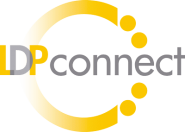How LDPs Handle Losing an Executive Sponsor
How LDPs Handle Losing an Executive Sponsor
Executive sponsorship can make or break any leadership development program.
For program participants, the sponsor is the one who can open doors. He or she champions the program, brings it visibility and credibility, and can help secure funding for its activities. He or she unlocks opportunities for participants needing rotations where their talents will be put to use, ensuring they get the career development they signed up for.
Behind closed doors, the executive sponsor advocates on behalf of participants in talent review discussions, promotion considerations, pay reviews, cross-functional development moves and assignments.
Ultimately, the executive sponsor is responsible for the health of the organization’s leadership pipeline. That’s why, when he or she leaves the company or transitions to another role and is no longer able to serve as the LDP’s chief liaison, managing the transition is critical. If handled poorly, the passing of the torch can throw the program into disarray, impairing morale and leaving participants without the direction they need.
A rocky transition is often felt among program managers even more than participants, as it directly impacts their ability to do their job.
A successful transition means making sure the participants get the guidance and attention they need without interruption. It means making sure program managers continue to get the support they depend on. Today we’ll discuss some things to keep in mind to make sure the loss of a program sponsor—and the transition to a new leader—is managed the best way possible.
Plan For A Smooth Transition
If you’re lucky, your program knows well in advance when an executive sponsor will be leaving. Some companies designate a tenure of a year or two for the role, rotating executives through the position to bring fresh blood to the program. Senior leaders get leadership development, too, and heading a rotational program is often considered an exposure point for executive development. In these cases, you will have plenty of time to prepare for the transition.
In other cases, the changing of the guard comes as a surprise. Whichever situation your program faces, the key to program survival is communication.
Before communicating to development program participants that the executive sponsor is leaving, program managers and the senior functional leadership team or executive team should identify who is best qualified to step in and backfill the role. Ideally, the new sponsor will be someone passionate about talent development. Someone who went through the program is often a great choice.
Someone with a great resume but without the right level of passion, energy, drive and commitment can cause a successful program to falter.
In Tammy Bohen’s 20-year career in business and human resources, she led global teams at several world-class organizations through these kinds of transitions. She founded Development by Design to provide customized talent development services. She makes sure that her clients know that it’s an honor and a privilege to lead these talent development programs, and finding the right leader means finding someone who understand that.
“Who you select to be the next executive sponsor really does matter,” Tammy says. “You want someone with strong executive presence, someone with vocal passion for the program and its participants. Someone who can advocate to drive positive change.”
Tammy says it’s important to be thoughtful about how you communicate the transition to program participants. In her experience, the leadership transfer should only be announced after a transition plan is in place. If you aren’t able to line up a sponsor right away, be sure to establish an interim leader and reassure participants that you’re searching for the best executive sponsor. You want to minimize that period of uncertainty for everyone.
Consider a Steering Committee Approach
Tammy says that an executive steering committee is generally better approach for LDPs than having a single executive sponsor. She cites numerous reasons for this—not the least of which is that transitions can be weathered more effectively.
The team approach may mean having one executive sponsor heading the committee, a team of VPs or general managers working together to champion the program. This approach allows programs to closely calibrate the quality of talent and effectively measure performance. With executive committees, you can match different committee members with program participants. Managing assignments at this personal level will help deliver higher-quality outcomes.
Tammy has worked with businesses that have taken the single executive sponsor approach and with others that take an executive committee approach.
“You get a much richer outcome when you have a broader executive team working together,” she says. “It creates more accountability and much broader organizational support. You can really amplify thought leadership when you’ve got a team of highly intelligent, capable, thoughtful leaders working together to strengthen the development of all participants.”
Collective decision-making also means evaluating early-career talent and matching them to the business needs they’re best equipped to address.
“You have more advocates and sponsors for the participants, and you also make better talent decisions.”
You also buffer your program against setbacks and frustrations that can arise when a single leader (in whose hands much of the decision-making power has been invested) is no longer available to fulfill that function.



